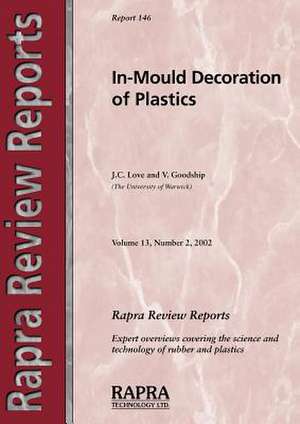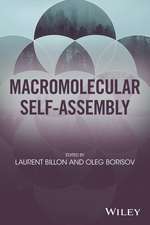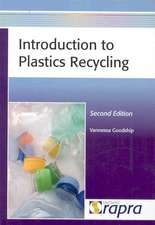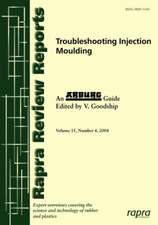In-Mould Decoration of Plastics: Rapra Review Reports
Autor J C Love, V. Goodshipen Limba Engleză Paperback – 31 ian 2002
Din seria Rapra Review Reports
- 23%
 Preț: 680.60 lei
Preț: 680.60 lei - 23%
 Preț: 682.99 lei
Preț: 682.99 lei - 23%
 Preț: 720.31 lei
Preț: 720.31 lei - 23%
 Preț: 722.83 lei
Preț: 722.83 lei - 23%
 Preț: 728.48 lei
Preț: 728.48 lei - 23%
 Preț: 719.75 lei
Preț: 719.75 lei - 23%
 Preț: 701.00 lei
Preț: 701.00 lei - 23%
 Preț: 682.53 lei
Preț: 682.53 lei - 23%
 Preț: 725.17 lei
Preț: 725.17 lei - 23%
 Preț: 725.66 lei
Preț: 725.66 lei - 23%
 Preț: 724.71 lei
Preț: 724.71 lei - 23%
 Preț: 681.60 lei
Preț: 681.60 lei - 23%
 Preț: 725.66 lei
Preț: 725.66 lei - 23%
 Preț: 723.30 lei
Preț: 723.30 lei - 23%
 Preț: 685.36 lei
Preț: 685.36 lei
Preț: 682.53 lei
Preț vechi: 886.41 lei
-23% Nou
Puncte Express: 1024
Preț estimativ în valută:
130.62€ • 134.94$ • 108.71£
130.62€ • 134.94$ • 108.71£
Carte tipărită la comandă
Livrare economică 22-28 martie
Preluare comenzi: 021 569.72.76
Specificații
ISBN-13: 9781859573280
ISBN-10: 1859573282
Pagini: 136
Dimensiuni: 210 x 297 x 7 mm
Greutate: 0.35 kg
Editura: Smithers Rapra Technology
Seria Rapra Review Reports
ISBN-10: 1859573282
Pagini: 136
Dimensiuni: 210 x 297 x 7 mm
Greutate: 0.35 kg
Editura: Smithers Rapra Technology
Seria Rapra Review Reports











